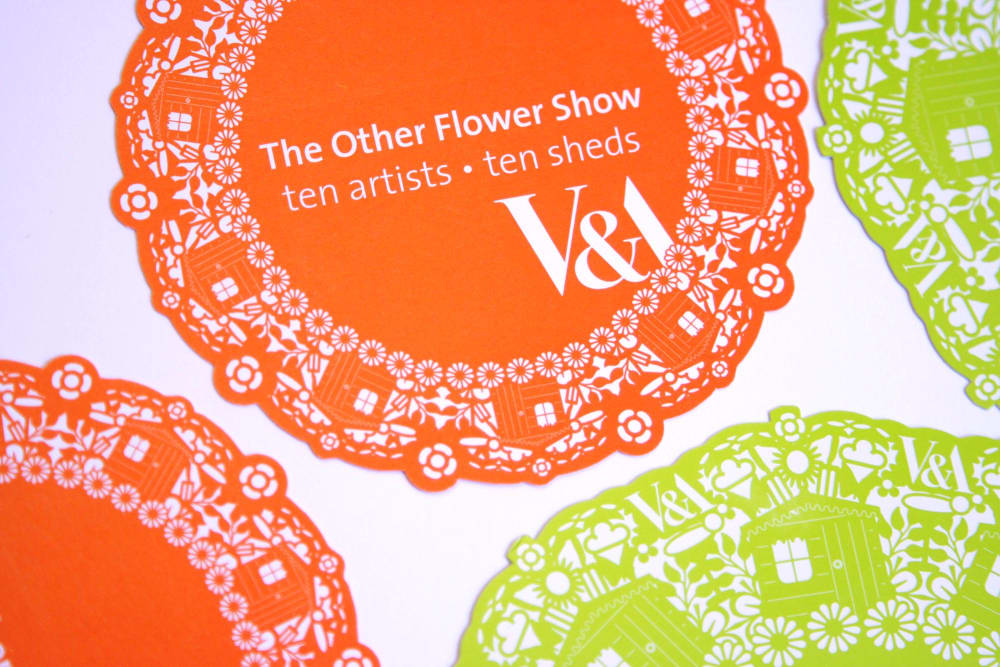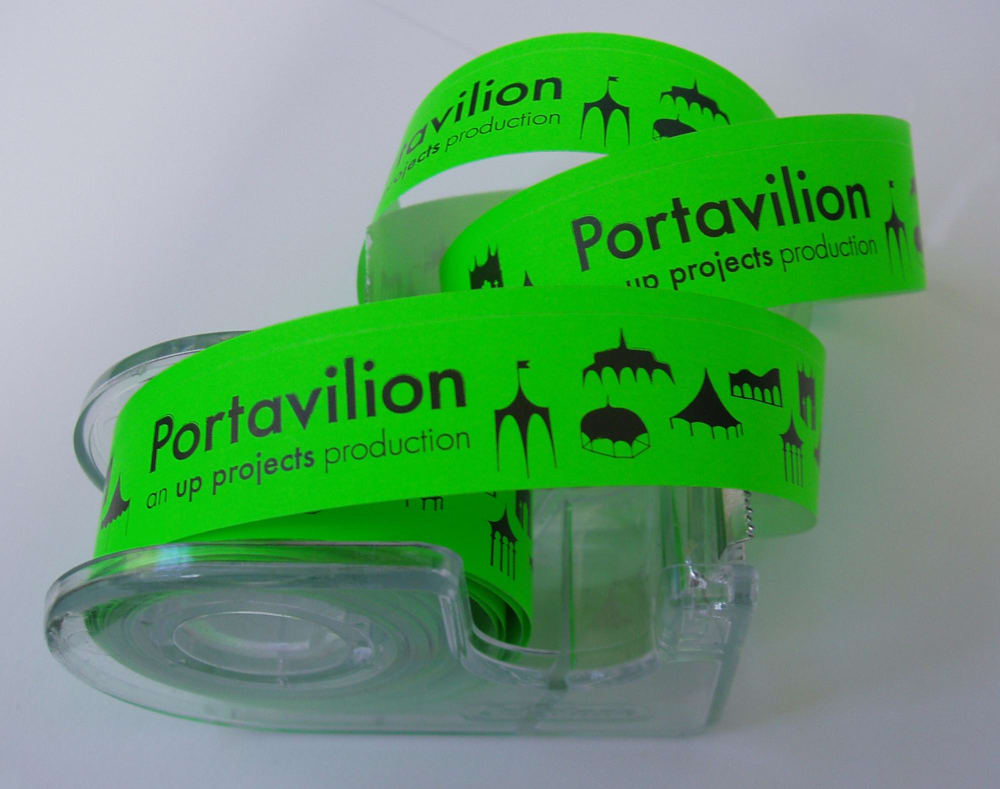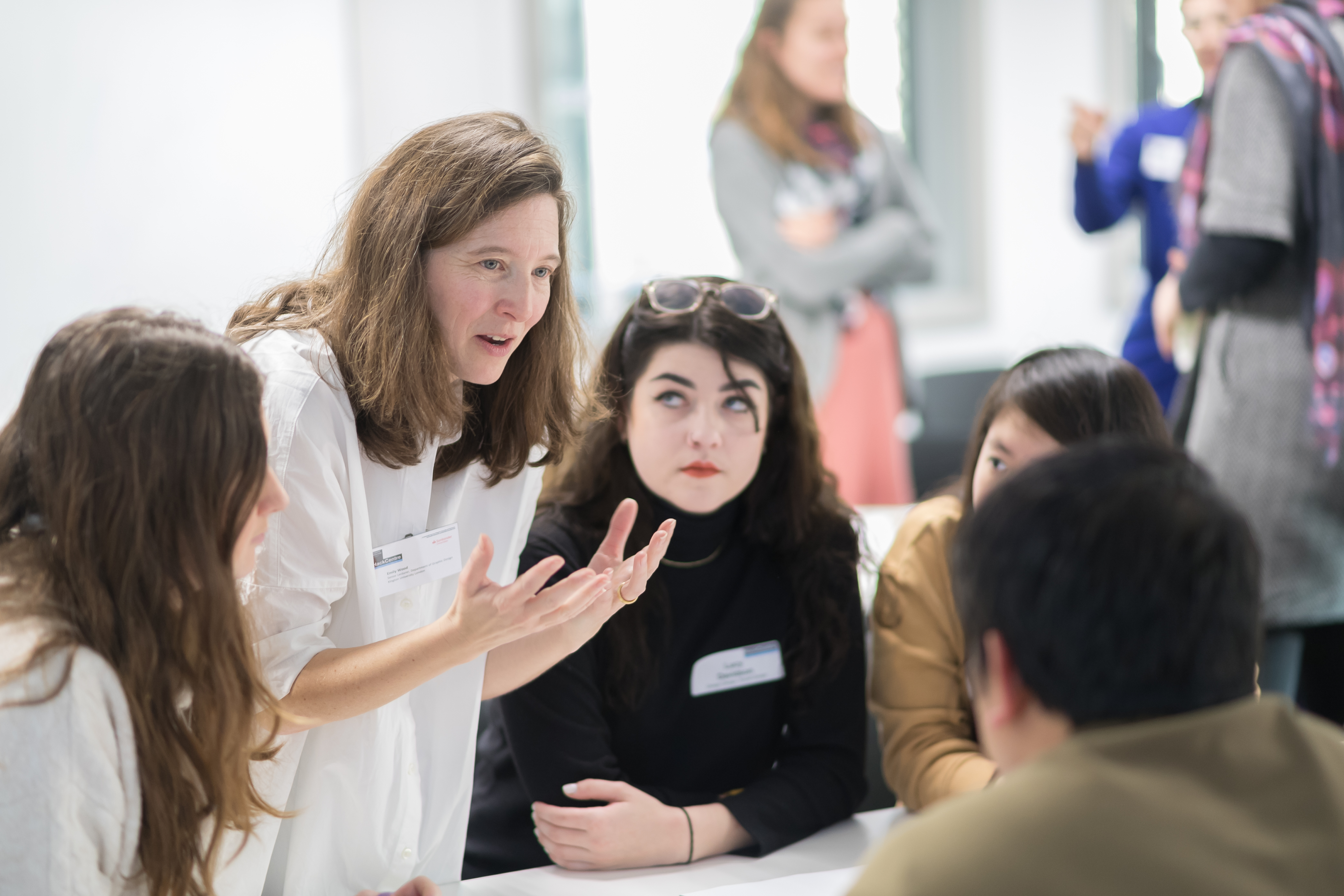Emily Wood joined Camberwell as the new Course Leader for BA Graphic Design at the beginning of the academic year. As she settled into the first weeks of her new role, we met her to find out about her background and how she sees teaching as part of her graphic design practice.
Getting into Graphic Design
Emily’s route to graphic design was not straight forward. Although she comes from a family of designers, she initially studied geography at university in Leeds. “Doing a science degree was definitely an act of rebellion! After university, I went on to work organising conferences and very nearly got a job at the Royal Geological Society which would have led to a very different career.”
When she didn’t get that job, however, she took up adult educational art classes while thinking about changing direction. Her uncle, who taught photography at Central Saint Martins (CSM) at the time, suggested she apply to Camberwell’s Foundation course, after which she went on to CSM for her undergraduate degree.
“I’m glad that I didn’t take the direct route into a design career,” she explains. “Coming to the subject after doing something completely different allowed me to feel really committed once I decided it was the path for me. And my BSc also laid the foundations for my interest in environmental issues, which I’ve continued to developed throughout my graphic design practice.”

, Camberwell College of Arts, UAL | Photograph: Courtesy Emily Wood.
Becoming a designer
While studying her undergraduate degree, Emily met Ruth Sykes, who had studied history before coming to graphic design. Together they founded REG, the design agency they still run together which started initially from Ruth’s flat in New Cross Gate.
“The key to our business in the beginning was continuing with freelancing work as we gathered together enough clients” she explains. Emily interned at Pentagram while she was a student, and went back to work there as a freelancer when she graduated. One of the clients she worked with was the Crafts Council, and she still works with them to this day.
“Making contacts and clients through other jobs we did helped build the agency when we were starting out. One of the first jobs we got with REG was through a client at a bigger agency who was starting out on their own, too, and needed an identity. That person was Emma Underhill, who founded UP Projects, an arts commissioning agency, in 2002 and REG ended up working with them for ten years.”
Following these early high-profile projects at organisations like the V&A, Emily and Ruth found a niche working with cultural and educational organisations and were invited to return to CSM to teach contextual studies on their old course four years after they had graduated.

, Camberwell College of Arts, UAL | Photograph: Courtesy Emily Wood.
Teaching as practice
For years following this first initiation, Emily has combined her graphic design work with her teaching practice, eventually studying for an MA in Academic Practice which included research into inclusivity, student transition and sustainability.
She joined us at Camberwell from Kingston School of Art, where she was Acting Course Leader of their BA Graphic Design.
Thinking about how her professional practice and teaching work alongside one another, she has come to the conclusion that, for her, they are fundamentally the same thing. “Researching an environment and thinking about how graphic design can create a better experience for the people using it is very similar to the process of teaching” she explains. “In my practice, I use the design process as a research tool to develop ideas and in many ways that’s also what teaching is.”
She believes that both teaching and graphic design are fundamental to creating a more sustainable future. “Graphic designers are trained to distribute information and messages, and need to use this skill wisely and with empathy for the planet and future generations.”

, Camberwell College of Arts, UAL | Photograph: Courtesy Emily Wood
Working with communities
Throughout her practice she has prioritised both sustainability and social engagement, and been drawn to projects that involve the communities they serve, so feels this makes her a good match for Camberwell’s ethos of social impact.
“While teaching at Kingston, I was extremely excited to make links with the Whitgift shopping centre in Croydon which created great opportunities for our students to work outside of the college.” Students spent a term based in an empty shop unit there, reacted to the local environment and created projects which engaged with the people who used, worked in and lived near to the centre.
One such project centred around interviews with Surrey Street market stall holders who commented to students that they were keen to reduce plastic use on the market and, specifically, move away from the ubiquitous blue plastic bags, so many of which became street litter at the end of market day. Exploring alternatives, students turned to the empty vegetable bags which supplied the grocery stalls and used the materials to create new, re-useable shopping bags. They have since launched the project as a business, Rehandle, and were incubated at Makerversity in Somerset House.
And it’s not just her students that she encourages to work in this way, but something she incorporates into her own work too.

, Camberwell College of Arts, UAL | Photograph: Rehandle
Alongside CSM colleagues Cath Caldwell, Senior Lecturer, BA Graphic Design, and Sarah Gresty, Course Leader, BA Fashion, Emily recently worked with women@thewell, a women-only service located near to the college in Kings Cross dedicated to supporting women whose lives are affected by or at risk of being affected by prostitution.
“This project was really interesting for me because I wanted to approach it with a methodology of social design to try to understand the impact that a period of huge change in their local area had had on this small charitable organisation.”
Through their research they discovered that those swift changes in the area meant that a lot of the support for homeless people and sex workers had been moved out to other parts of the borough due to rising rents and business rates. Yet this particular organisation was still there and as a result was now quite isolated.
“We had initially thought we might come and create some activities that worked directly with the service users” she says of this project, “but the research outcomes showed other, unexpected ways we could use design to help a small organisation like women@thewell.
The final design intervention they developed in response to this to invite people from local organisations in the ‘Knowledge Quarter’ – the name for this area of Kings Cross – to come to CSM to take part in a creative activity. Representatives from Islington Council and Camden Council, the British Library, Google, the Crick Institute and British Museum were all invited to be taught to knit on the college’s knitting machines, learning a new skill followed by networking lunch to make links between organisations.
“The networking element was absolutely vital for women@thewell and the other organisations who took part also found it really useful. It’s something they’d now like to do again, to keep up the dialogue and strengthen their connections, so it was a great outcome.”
This is the kind of project she really loves working on. “The joy of working in graphic design is finding these unexpected solutions. Whether its broad concerns such as how to make creative practice more sustainable or specific issues like cutting down plastic bag use, with every project I work on I ask: how can graphic design have an impact on people’s lives?”
Read Emily Wood’s staff profile
Find out more about BA Graphic Design

